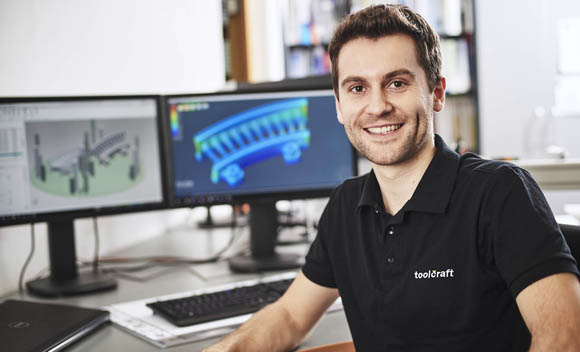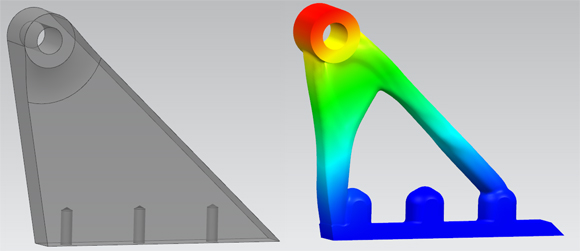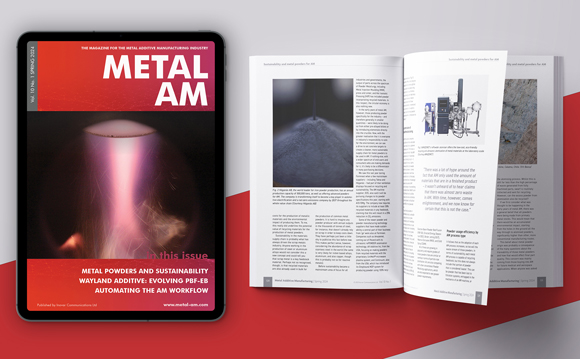Toolcraft reduces weight and cost of AM builds with Siemens NX software
March 16, 2018

Ralf Domider, responsible for design and simulation in Toolcraft’s metal laser melting division (Courtesy Toolcraft)
Toolcraft, Georgensgmünd, Germany, states that by using the Finite Element Method (FEM) calculations and topology optimisation offered by Siemens NX software, it has been able to achieve significant reductions in the weight and cost of parts produced by metal Additive Manufacturing. The company began using Siemens NX in 2017 in order to improve its process chain, from design and construction to modifications using machining techniques.
Ralf Domider, who is responsible for design and simulation in Toolcraft’s metal laser melting division, explained, “Special features for topology optimisation and FEM calculations enable us to design optimal components. These enable us to analyse not only the material being employed and the laser-melted test pieces, but the forces subsequently exerted on the component as well.”
Siemens NX software can be used to reproduce the load paths and internal stresses which will later act on a component, while also taking into account the ambient temperature of the work environment. Using this data, the program identifies areas in which the amount of material can be reduced and provides detailed information on the stresses and strains exerted within the optimised component (Fig. 1).

Fig. 1 A simple bracket for fixing attachments in an engine compartment: the component weighs 50% less, but the functionality and durability remain the same (Courtesy Toolcraft)
While the level of stress is high in the areas highlighted in red, the green and blue areas depict regions where there is a lower amount of stress. This information enables designers to evaluate the topology optimisation results in terms of functionality and durability, allowing the weight to be reduced as much as possible without having a detrimental effect on component properties. In most cases, a safety factor is included in the calculation, so that the completed part can withstand an even greater load than stated.
As well as reducing part weight, FEM calculations were used to optimise part design. Toolcraft’s designers used topology optimisation to calculate the most efficient basic shape (topology) of components, while taking into account the mechanical loads to which they would later be subjected. Besides conserving materials, optimising a component’s design in advance means that fewer modifications will be required once it is produced.
For example, by designing parts intelligently for Additive Manufacturing, it is possible to minimise the need for support structures (and thus the support removal process), surface treatments or reworking using machining. According to Toolcraft, the analysis provided also enabled the use of different materials by allowing designers to ascertain which material is most suitable for the component’s application.
“This not only saves additional time and materials, but further reduces the need for reworking,” stated Domider. Toolcraft stated that it is committed to further improving its procedures and process chain, including through optical and tactile measuring and non-destructive testing in accordance with NADCAP.
















